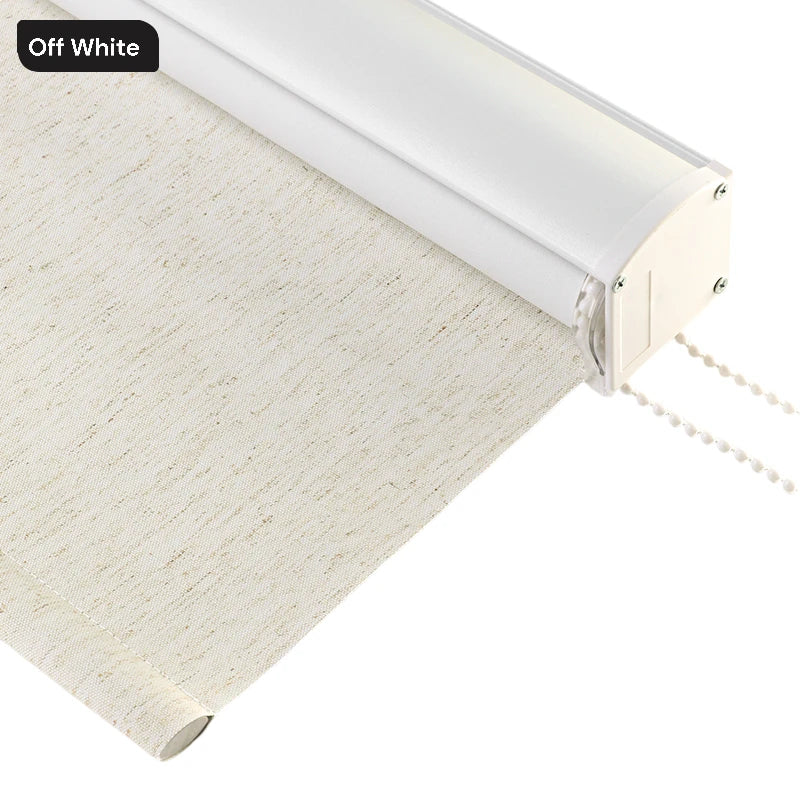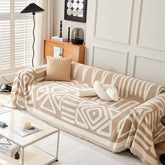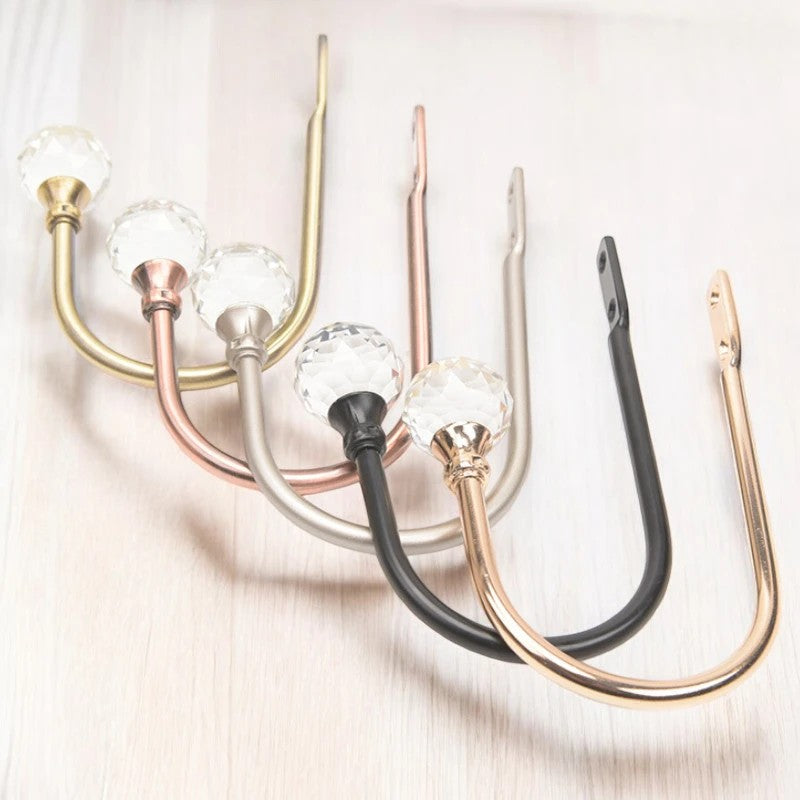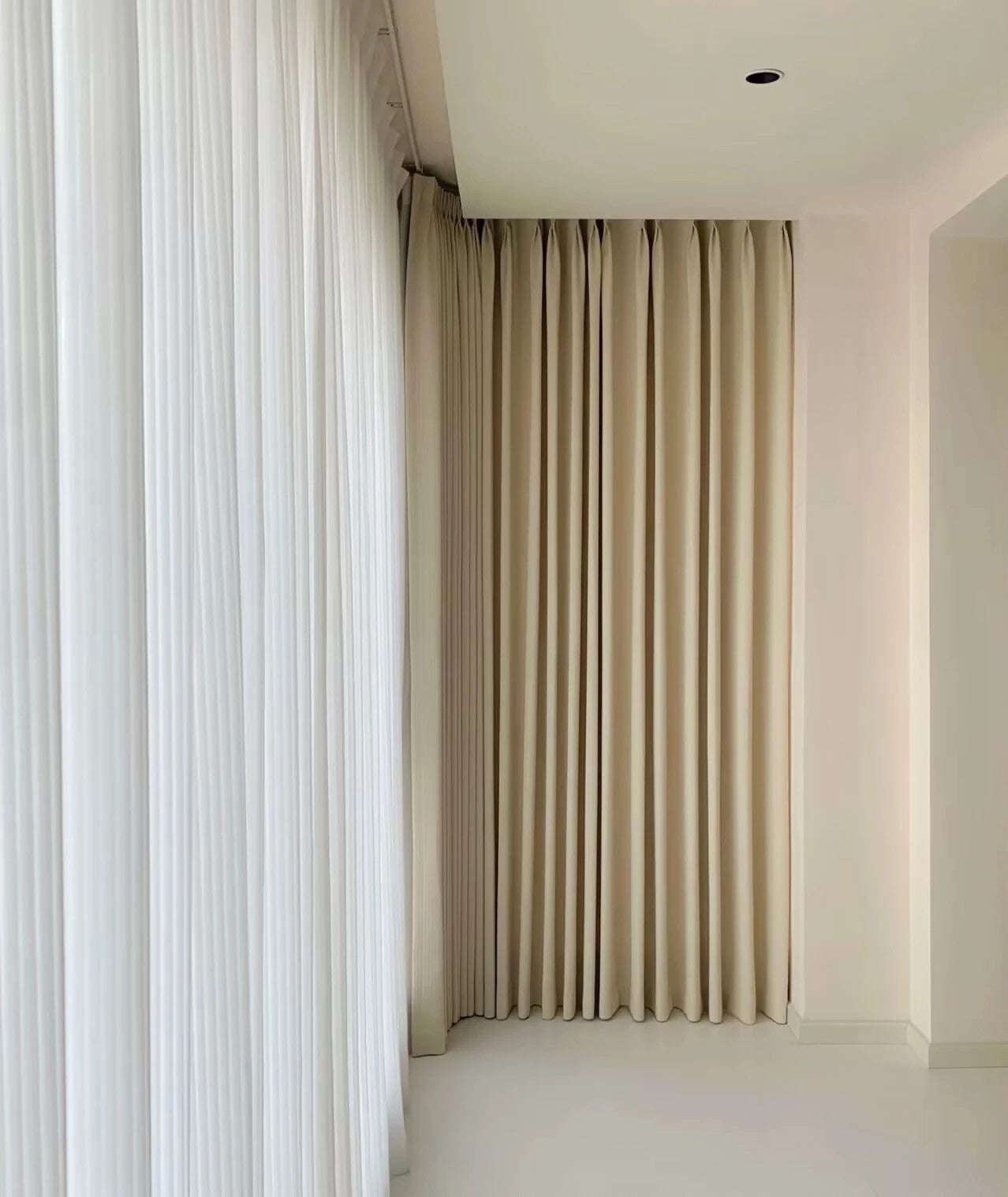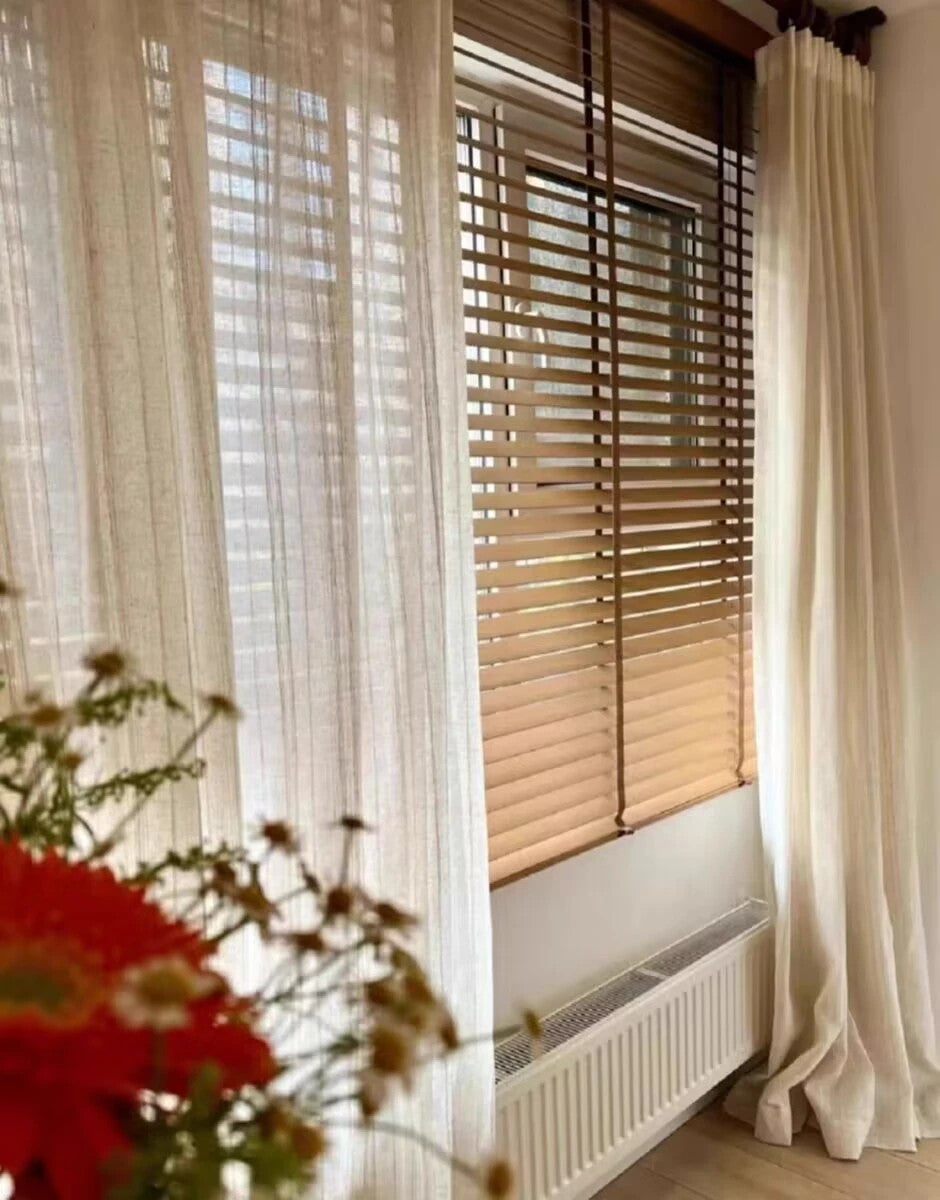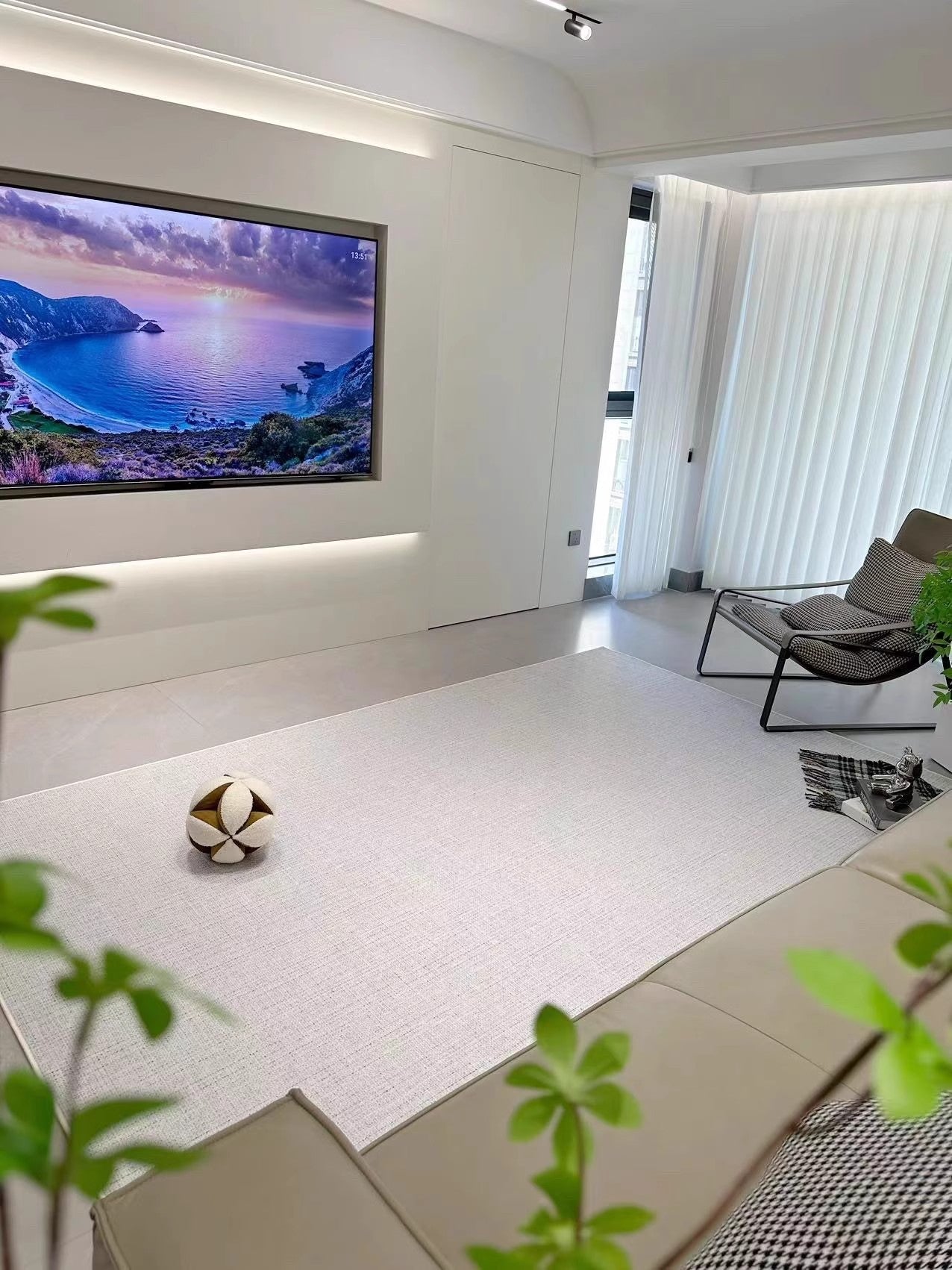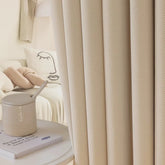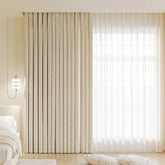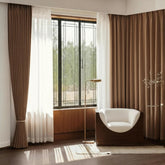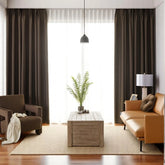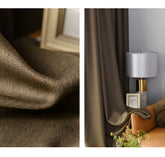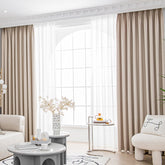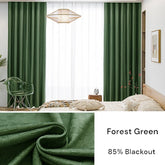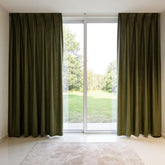Sustainable Choices for Custom Curtains
When it comes to home decor, making sustainable choices is becoming increasingly important. Sustainable choices involve selecting products and materials that have a minimal impact on the environment and promote health and well-being. Custom curtains are an essential element of home decor, and opting for sustainable options can have numerous benefits. In this article, we will explore the advantages of sustainable choices for custom curtains, discuss sustainable materials, energy-efficient design, maintenance and care, and the importance of supporting sustainable brands and local artisans.
Benefits of Sustainable Choices for Custom Curtains
A. Environmental Benefits
Sustainable choices for custom curtains offer several environmental benefits.
Firstly, they contribute to reducing carbon footprint. By opting for curtains made from sustainable materials and manufactured using eco-friendly processes, you can minimize greenhouse gas emissions associated with the production and disposal of curtains.
Secondly, sustainable choices promote the conservation of natural resources. Materials such as organic fabrics and recycled materials require fewer resources like water and energy during production. By choosing curtains made from these materials, you help preserve valuable resources for future generations.
Lastly, sustainable choices for custom curtains help decrease waste generation. Curtains made from recycled or repurposed materials reduce the amount of waste that ends up in landfills. By supporting the circular economy, you contribute to a more sustainable and waste-free future.
B. Health Benefits
Firstly, sustainable materials such as organic fabrics are free from harmful chemicals and pesticides. This means that the curtains in your home will not release toxic substances into the air, improving indoor air quality and creating a healthier living environment.
Secondly, sustainable choices reduce exposure to harmful chemicals. Conventional curtains often contain synthetic materials and chemical dyes that can release volatile organic compounds (VOCs) into the air. VOCs have been linked to various health issues, including respiratory problems and allergies. By choosing curtains made from sustainable materials and dyes, you can minimize exposure to these harmful substances.
Lastly, sustainable curtains can help prevent allergies. Organic fabrics are hypoallergenic and less likely to trigger allergic reactions compared to curtains made from synthetic materials. By selecting sustainable options, you create a safer and healthier space for you and your family.
C. Economic Benefits
In addition to the environmental and health benefits, sustainable choices for custom curtains offer economic advantages.
Firstly, investing in sustainable curtains can lead to long-term cost savings. While sustainable options may have a higher upfront cost, they are often more durable and have a longer lifespan compared to conventional curtains. This means you won't have to replace them as frequently, saving you money in the long run.
Secondly, sustainable curtains can contribute to increased energy efficiency in your home. Certain curtain designs, such as those with thermal lining or blackout curtains, can help regulate temperature and reduce heat loss during winter or heat gain during summer. This can result in lower energy bills by reducing the need for heating or cooling.
Lastly, choosing sustainable curtains can increase the resale value of your property. With growing awareness and demand for sustainable products, potential buyers may be willing to pay a premium for a home that incorporates eco-friendly elements, including sustainable curtains.
Sustainable Materials for Custom Curtains
A. Organic Fabrics
Organic fabrics are an excellent choice for sustainable custom curtains. They are made from natural fibers that are grown without the use of synthetic pesticides or genetically modified organisms (GMOs). Some popular organic fabric options for curtains include cotton, linen, and hemp.
1. Cotton: Organic cotton is grown using sustainable farming practices that prioritize soil health and water conservation. It is a versatile fabric that can be used for a variety of curtain styles, from sheer curtains to blackout curtains.
2. Linen: Linen is made from the flax plant and is known for its durability and breathability. It has a natural texture that adds a touch of elegance to any room. Linen curtains are a popular choice for those seeking a sustainable and timeless look.
3. Hemp: Hemp is a highly sustainable fabric as it requires minimal water and pesticides to grow. It is a durable and versatile material that can be used for both sheer and blackout curtains. Hemp curtains offer a natural and rustic aesthetic.
B. Recycled Materials
Using recycled materials for custom curtains is another sustainable option. These materials are made from post-consumer waste or industrial by-products, reducing the demand for virgin resources and diverting waste from landfills.
1. Recycled Polyester: Curtains made from recycled polyester are a popular choice. This fabric is created by transforming plastic bottles into polyester fibers. It offers durability and a wide range of design options.
2. Upcycled Fabrics: Upcycling involves transforming discarded fabrics or clothing into new curtain materials. This creative approach not only reduces waste but also adds a unique and personalized touch to your curtains.
3. Repurposed Materials: Repurposing materials such as old bed sheets, tablecloths, or vintage fabrics can give your curtains a one-of-a-kind look. It's a sustainable and budget-friendly option that allows you to breathe new life into existing textiles.
C. Sustainable Dyes and Finishes
Choosing sustainable dyes and finishes for your custom curtains is essential to ensure they are environmentally friendly and safe for your health. 1. Natural Dyes: Natural dyes are derived from plant-based sources such as flowers, leaves, and roots. They are free from harmful chemicals and provide a wide range of beautiful and vibrant colors for your curtains. 2. Low VOC Finishes: Volatile organic compounds (VOCs) are chemicals commonly found in conventional finishes and can contribute to indoor air pollution. Opting for low VOC finishes ensures that your curtains do not release harmful substances into the air. 3. Water-Based Finishes: Water-based finishes are an eco-friendly alternative to solvent-based finishes. They have a lower environmental impact and are safer to use. Water-based finishes can provide protection and enhance the longevity of your curtains.
Energy-Efficient Curtain Design
A. Insulating Properties
Energy-efficient curtain design can help regulate temperature and reduce energy consumption in your home.
1. Thermal Lining: Curtains with thermal lining provide insulation by trapping air between the fabric layers. This helps to keep your home warm during winter and cool during summer, reducing the need for excessive heating or cooling.
2. Blackout Curtains: Blackout curtains are designed to block out sunlight and provide privacy. They also offer insulation benefits by reducing heat transfer through windows, making them an energy-efficient choice.
3. Cellular Shades: Cellular shades, also known as honeycomb shades, have a unique cellular structure that traps air, providing excellent insulation. They can help reduce heat loss in winter and heat gain in summer, resulting in energy savings.
B. Proper Installation and Fit
Proper installation and fit of your curtains are crucial for maximizing their energy efficiency.
1. Sealing Gaps and Drafts: Ensure that your curtains are properly installed and seal any gaps or drafts around windows. This prevents air leakage and improves the overall insulation of your home.
2. Correct Measurements: Take accurate measurements of your windows to ensure that your curtains fit properly. Ill-fitting curtains can allow heat transfer and reduce their effectiveness in regulating temperature.
3. Mounting Hardware: Choose appropriate mounting hardware that allows your curtains to hang close to the wall, creating a seal and preventing air from escaping or entering through the sides.
C. Smart Curtain Systems
Smart curtain systems offer convenience and energy efficiency by automating the opening and closing of curtains based on predetermined schedules or sensor inputs.
1. Automated Controls: Smart curtain systems can be controlled remotely using a smartphone or integrated with home automation systems. This allows you to easily adjust the curtains' position and schedule their opening and closing.
2. Timers and Sensors: Timers and sensors can be used to automate curtain movements based on time of day, sunlight intensity, or occupancy. This ensures that curtains are adjusted for optimal energy efficiency without manual intervention.
3. Integration with Smart Home Technology: Smart curtain systems can be integrated with other smart home devices, such as thermostats or lighting systems. This allows for coordinated energy-saving actions, such as closing curtains when the heating or cooling system is active.
Maintenance and Care for Sustainable Curtains
A. Cleaning Methods
Proper cleaning methods for sustainable curtains help maintain their quality and prolong their lifespan.
1. Eco-Friendly Detergents: Use eco-friendly detergents that are free from harsh chemicals and are biodegradable. This ensures that your curtains are cleaned without negatively impacting the environment.
2. Handwashing: For delicate fabrics or curtains with intricate details, handwashing is often the best option. Follow the care instructions provided by the manufacturer to ensure proper cleaning.
3. Professional Cleaning Services: If you are unsure about cleaning your curtains yourself, consider professional cleaning services that specialize in eco-friendly cleaning methods. They have the expertise to handle different fabric types and ensure thorough cleaning.
B. Repair and Restoration
Repairing and restoring sustainable curtains can help extend their lifespan and reduce waste.
1. Patching and Mending: If your curtains have minor tears or damages, consider patching or mending them instead of replacing the entire curtain. This not only saves money but also reduces waste.
2. Replacing Damaged Parts: In cases where a specific part of the curtain, such as the lining or hardware, is damaged, consider replacing only that part instead of the entire curtain. This allows you to maintain the sustainability of your curtains while addressing the issue.
3. Upcycling Old Curtains: If you no longer need your curtains or they are beyond repair, consider upcycling them into new items such as pillow covers, table runners, or even reusable shopping bags. This gives your curtains a new purpose and reduces waste.
Supporting Sustainable Brands and Local Artisans
A. Researching Eco-Friendly Brands
Supporting eco-friendly brands is crucial for promoting sustainability in the home decor industry.
1. Certifications and Labels: Look for curtains that carry certifications or labels indicating their sustainability credentials. These may include certifications such as Global Organic Textile Standard (GOTS) for organic fabrics or labels that indicate the use of recycled materials.
2. Transparency in Supply Chain: Research brands that prioritize transparency in their supply chain. This ensures that the materials used in the curtains are sourced ethically and sustainably.
3. Social and Environmental Responsibility: Support brands that demonstrate social and environmental responsibility. This includes fair treatment of workers, ethical manufacturing practices, and initiatives to reduce their environmental impact.
B. Choosing Local Artisans and Small Businesses
Supporting local artisans and small businesses not only promotes sustainability but also allows for customization and personalized customer service.
1. Supporting Local Economy: By choosing curtains made by local artisans or purchasing from small businesses, you contribute to the local economy and help sustain traditional craftsmanship.
2. Customization Options: Local artisans often offer customization options, allowing you to create curtains that perfectly fit your style and requirements. This ensures that you get unique and personalized curtains for your home.
3. Personalized Customer Service: Local artisans and small businesses often provide personalized customer service, offering guidance and expertise throughout the curtain selection and customization process. This ensures a more satisfying and tailored experience.
Overcoming Challenges in Sustainable Curtain Choices
A. Limited Availability and Variety
While sustainable curtain options are growing, there may still be limited availability and variety in the market.
1. Expanding Market Options: Encourage the expansion of sustainable curtain options by supporting brands that prioritize sustainability. This creates a demand for more sustainable choices and encourages manufacturers to offer a wider range of options.
2. Encouraging Demand for Sustainable Products: Spread awareness about the importance of sustainable choices in home decor. By educating others and sharing your own experiences, you can help create a larger demand for sustainable curtains, prompting manufacturers to increase their offerings.
3. Collaboration Between Designers and Manufacturers: Designers and manufacturers can collaborate to create sustainable curtain collections that meet the needs and preferences of consumers. By working together, they can overcome challenges and bring more sustainable options to the market.
B. Cost Considerations
The upfront cost of sustainable curtains may be higher compared to conventional options, posing a challenge for some individuals.
1. Long-Term Savings vs. Upfront Costs: Consider the long-term savings associated with sustainable curtains. While the initial investment may be higher, the durability and energy efficiency of sustainable curtains can result in significant cost savings over time.
2. Budget-Friendly Alternatives: Look for budget-friendly alternatives within the sustainable curtain market. There are often options available at different price points, allowing you to find curtains that align with your budget and sustainability goals.
3. DIY Options: Consider DIY options for sustainable curtains. Upcycling old fabrics or repurposing materials can be a cost-effective way to create unique and sustainable curtains for your home.
Conclusion
In conclusion, making sustainable choices for custom curtains is not only beneficial for the environment but also for your health and finances. At Dolcewe, we are committed to providing you with a wide selection of sustainable custom curtains that elevate your home decor while embracing eco-conscious practices.
By opting for our thoughtfully curated sustainable materials, energy-efficient designs, and proper maintenance tips, you can transform your living spaces into green sanctuaries, reducing your ecological impact and fostering a healthier ambiance for you and your loved ones.
Moreover, by supporting Dolcewe, you are not just investing in quality products; you are also contributing to a more sustainable economy and supporting local artisans who passionately craft each curtain to perfection.
Let's embark on this journey together, making sustainable choices in home decor, and collectively shaping a brighter future for ourselves and the planet. Discover the perfect sustainable custom curtains for your home!
FAQ
Q: Where can I find sustainable custom curtains?
A: You can find sustainable custom curtains from various sources. Research eco-friendly brands and check if they offer custom options. Additionally, consider supporting local artisans and small businesses like dolcewe.com that prioritize sustainability.
Q: How do I clean sustainable curtains?
A: Cleaning methods for sustainable curtains depend on the specific fabric and care instructions provided by the manufacturer. Use eco-friendly detergents and follow the recommended cleaning process. For delicate fabrics, handwashing may be the best option. Professional cleaning services specializing in eco-friendly methods are also available.
Q: Are sustainable curtains more expensive?
A: Sustainable curtains may have a higher upfront cost compared to conventional options. However, they often offer long-term cost savings due to their durability and energy efficiency. There are also budget-friendly alternatives available within the sustainable curtain market.
Q: Can I make my own sustainable curtains?
A: Yes, you can make your own sustainable curtains. Consider upcycling old fabrics or repurposing materials to create unique and eco-friendly curtains. DIY options allow you to customize your curtains while reducing waste.



